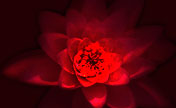The first permanent photograph was made in 1822 by a French inventor, Joseph Nicéphore Niépce, building on a discovery by Johann Heinrich Schultz (1724): that a silver and chalk mixture darkens under exposure to light. Niépce and Louis Daguerre refined this process. Daguerre discovered that exposing the silver first to iodine vapor, before exposure to light, and then to mercury fumes after the photograph was taken, could form a latent image; bathing the plate in a salt bath then fixes the image. These ideas led to the famous daguerreotype.
The daguerreotype had its problems, notably the fragility of the resulting picture, and that it was a positive-only process and thus could not be re-printed. Inventors set about looking for improved processes that would be more practical. Several processes were introduced and used for a short time between Niépce's first image and the introduction of the collodion process in 1848. Collodion-based wet-glass plate negatives with prints made on albumen paper remained the preferred photographic method for some time, even after the introduction of the even more practical gelatin process in 1871. Adaptations of the gelatin process have remained the primary black-and-white photographic process to this day, differing primarily in the film material itself, originally glass and then a variety of flexible films.
Color photography is almost as old as black-and-white, with early experiments dating to John Herschel's experiments with Anthotype from 1842, and Lippmann plate from 1891. Color photography became much more popular with the introduction of Autochrome Lumière in 1903, which was replaced by Kodachrome, Ilfochrome and similar processes. For many years these processes were used almost exclusively for transparencies (in slide projectors and similar devices), but color prints became popular with the introduction of the Chromogenic negative, which is the most-used system in the C-41 process. The needs of the movie industry have also introduced a host of special-purpose systems, perhaps the best-known being the now rare Technicolor.
Types of photographs
Non-digital photographs are produced with a two-step chemical process. In the two-step process the light-sensitive film captures a negative image (colors and lights/darks are inverted). To produce a positive image, the negative is most commonly transferred ('printed') onto photographic paper. Printing the negative onto transparent film stock is used to manufacture motion picture films.
Alternatively, the film is processed to invert the negative image, yielding positive transparencies. Such positive images are usually mounted in frames, called slides. Before recent advances in digital photography, transparencies were widely used by professionals because of their sharpness and accuracy of color rendition. Most photographs published in magazines were taken on color transparency film.
Originally all photographs were monochromatic, or hand-painted in color. Although methods for developing color photos were available as early as 1861, they did not become widely available until the 1940s or 50s, and even so, until the 1960s most photographs were taken in black and white. Since then, Color photography has dominated popular photography, although black and white is still used, being easier to develop than color.
Panoramic format images can be taken with cameras like the Hasselblad Xpan on standard film. Since the 1990s, panoramic photos have been available on the Advanced Photo System film. APS was developed by several of the major film manufacturers to provide a film with different formats and computerized options available, though APS panoramas were created using a mask in panorama-capable cameras, far less desirable than a true panoramic camera which achieves its effect through wider film format. APS has become less popular and is being discontinued.
The advent of the microcomputer and digital photography has led to the rise of digital prints. These prints are created from stored graphic formats such as JPEG, TIFF, and RAW. The types of printers used include inkjet printers, dye-sublimation printer, laser printers, and thermal printers.
Digital photography
Traditional photography burdened photographers working at remote locations without easy access to processing facilities, and competition from television pressured photographers to deliver images to newspapers with greater speed. Photo journalists at remote locations often carried miniature photo labs and a means of transmitting images through telephone lines. In 1981, Sony unveiled the first consumer camera to use a charge-coupled device for imaging, eliminating the need for film: the Sony Mavica. While the Mavica saved images to disk, the images were displayed on television, and the camera was not fully digital. In 1990, Kodak unveiled the DCS 100, the first commercially available digital camera. Although its high cost precluded uses other than photojournalism and professional photography, commercial digital photography was born.
Digital imaging uses an electronic image sensor to record the image as a set of electronic data rather than as chemical changes on film. The primary difference between digital and chemical photography is that chemical photography resists manipulation because it involves film and photographic paper, while digital imaging is a highly manipulative medium. This difference allows for a degree of image post-processing that is comparatively difficult in film-based photography and permits different communicative potentials and applications.
Digital point-and-shoot cameras have become widespread consumer products, outselling film cameras, and including new features such as video and audio recording. Kodak announced in January 2004 that it would no longer sell reloadable 35 mm cameras in western Europe, Canada and the United States after the end of that year. Kodak was at that time a minor player in the reloadable film cameras market. In January 2006, Nikon followed suit and announced that they will stop the production of all but two models of their film cameras: the low-end Nikon FM10, and the high-end Nikon F6. On May 25, 2006, Canon announced they will stop developing new film SLR cameras. Though most new camera designs are now digital, a new 6x6cm/6x7cm medium format film camera was introduced in 2008 in a cooperation between Fuji and Voigtländer.
According to a survey made by Kodak in 2007, 75 percent of professional photographers say they will continue to use film, even though some embrace digital.
According to the U.S. survey results, more than two-thirds (68 percent) of professional photographers prefer the results of film to those of digital for certain applications including:
- film’s superiority in capturing more information on medium and large format films (48 percent);
- creating a traditional photographic look (48 percent);
- capturing shadow and highlighting details (45 percent);
- the wide exposure latitude of film (42 percent); and
- archival storage (38 percent)
Digital imaging has raised many ethical concerns because of the ease of manipulating digital photographs in post processing. Many photojournalists have declared they will not crop their pictures, or are forbidden from combining elements of multiple photos to make "illustrations," passing them as real photographs. Today's technology has made picture editing relatively simple for even the novice photographer. However, recent changes of in-camera processing allows digital fingerprinting of RAW photos to verify against tampering of digital photos for forensics use.
Camera phones, combined with sites like Flickr, have led to a new kind of social photography. |

